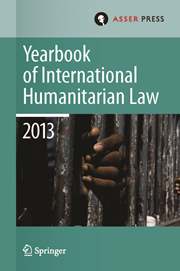Article contents
CONVENTIONAL WEAPONS AND WEAPONS REVIEWS
Published online by Cambridge University Press: 19 October 2007
Extract
The 1977 Protocol I Additional to the Geneva Conventions of 12 August 1949 instituted the following obligation for States Parties:‘Article 36. New weaponsIn the study, development, acquisition or adoption of a new weapon, means or method of warfare, a High Contracting Party is under an obligation to determine whether its employment would, in some or all circumstances, be prohibited by this Protocol or by any other rule of international law applicable to the High Contracting Party.’
The obligation to ensure the legality of weapons of war was not new. Article 1 of Hague Convention II with Respect to the Laws and Customs of War on Land of 29 July 1899 obligated States Parties to issue instructions to their armed land forces, which were to conform to the rules contained in the Annex to that Convention. This included Article 23(e), which prohibited employment of ‘arms, projectiles or material of a nature to cause superfluous injury’. With non-substantive alteration, Article 1 of the Convention and Article 23(e) of the Annex were re-adopted in Hague Convention IV Respecting the Laws and Customs of War on Land of 18 October 1907. Under the international law maxim pacta sunt servanda states have a general duty to engage in good faith performance of their treaty obligations. This would have included a duty to ensure military weapons and munitions complied with Hague Convention IV and obligations contained in other treaties. Article 36 of Additional Protocol I changed the general obligation of good faith treaty adherence to a specific one through codification of this pre-existing obligation. Yet, almost three decades following the conclusion of the Diplomatic Conference that promulgated Additional Protocols I and II, the number of governments implementing this provision is limited. Of 166 States Parties to Additional Protocol I, only nine have been identified as having formal, full-time programmes for the legal review of new military weapons and ammunition.
This article provides the history of and context for Article 36's incorporation into Additional Protocol I, the development of the law of war related to certain conventional weapons over the past four decades, and details as to implementation of this obligation. The last part is based upon the author's experience in preparing legal reviews of military weapons and ammunition over the past 30 years.
Keywords
- Type
- Articles
- Information
- Copyright
- © 2005 T. M. C. Asser Instituut, The Hague, The Netherlands
- 22
- Cited by


